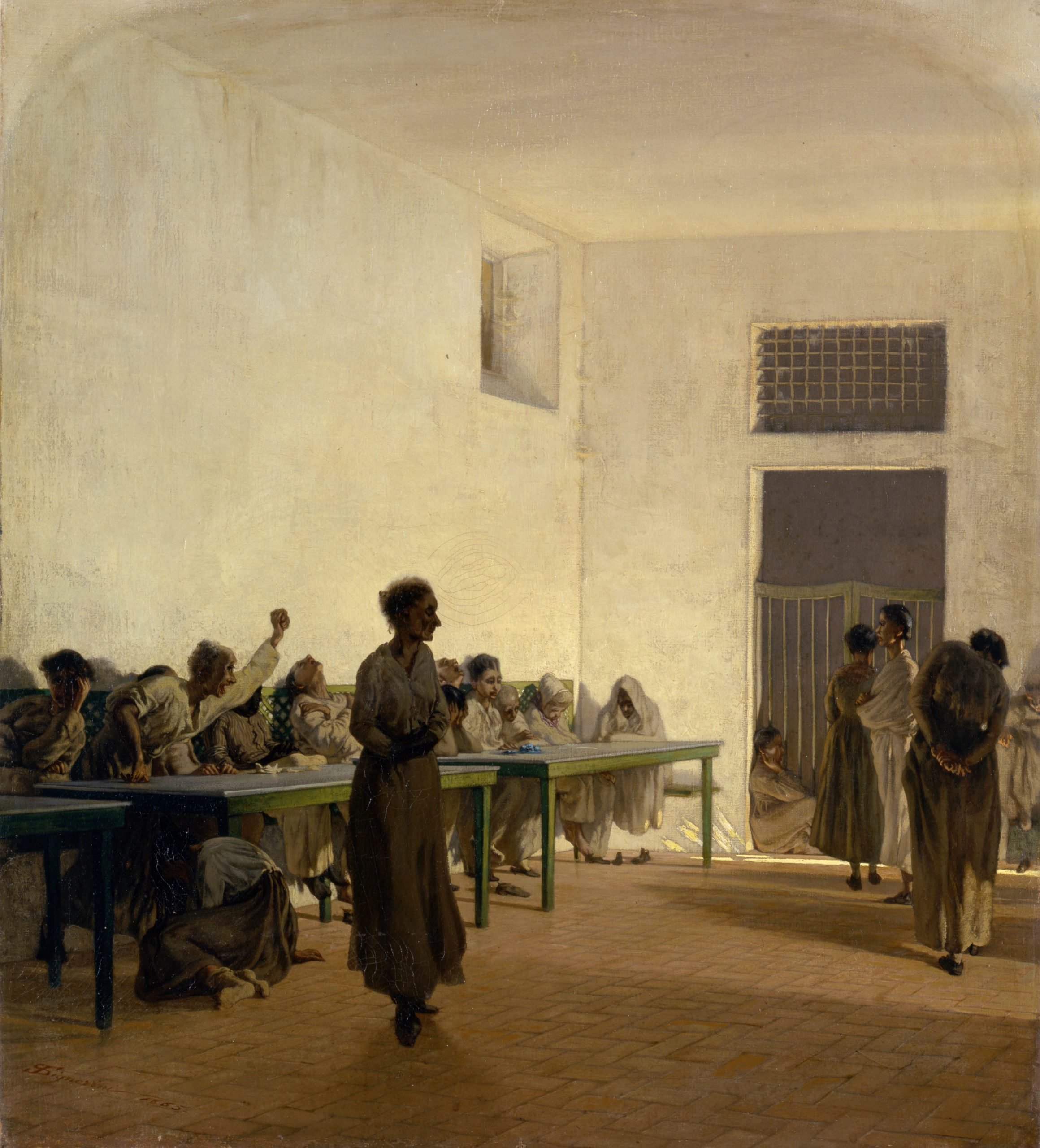
Telemaco Signorini, La sala delle agitate al Bonifacio di Firenze (The room of the restless at the Bonifacio in Florence) (1865)
Ca’ Pesaro, International Gallery of Modern Art, Venice
Chosen by: Elisabetta Barisoni, Director and Curator
This is one of our masterpieces that I really care about having on display. It’s very appreciated by our visitors but is not so well-known internationally. Of course, the women give a feeling of loneliness, of being abandoned; some express psychological torment. But the main feeling is created by the amazing use of space. Compared to the height of the women, the space is really empty and big; it’s not comfortable at all. The figures are in the lower part of the space, with no decorations, just these very high windows and cold walls. There is light coming from the right-hand side, going above the figures, which makes the painting feel melancholic and sad.
I think the artist wanted to express that this is not where you take care of someone, but that it is full of loneliness. The name of the room itself is interesting. “Restless” could refer to anything. Women were hospitalized and put in asylums for many different reasons. Some needed medical attention and some perhaps were not following the usual path or were seen as visionaries.
There was an uprising of realism in art and literature at the time. On one hand there was the preciseness of documenting what happened, but at the same time there was a denunciation. It’s a way for the painter to discuss the situation so the audience can understand the way these people were treated. With many of the Impressionists or post-Impressionists like Degas or Toulouse-Lautrec, there is an attention on alcoholics, or imperfect bodies. It’s not always linked to a social kind of conscience, but I think in Florence there was a very advanced society that caused a special kind of consciousness in the audience who would have seen this work.
One of the biggest problems for our contemporary age, especially after the covid years, is psychological issues. The feeling I have apart from the beauty of the painting itself and the light, is the subject. Psychiatry is quite recent in the history of mankind and these problems are still very urgent. It’s not just a reflection of the history of psychiatric services. Unfortunately, it’s an up-to-date to subject.
– Elisabetta Barisoni, Director and Curator of Ca’ Pesaro in Venice, as told to Emily Steer
What artwork hangs across from Mona Lisa? What lies downstairs from Van Gogh’s Sunflowers? In “The Permanent Collection,” we journey to museums around the globe, illuminating hidden gems and sharing stories behind artworks that often lie beyond the spotlight.